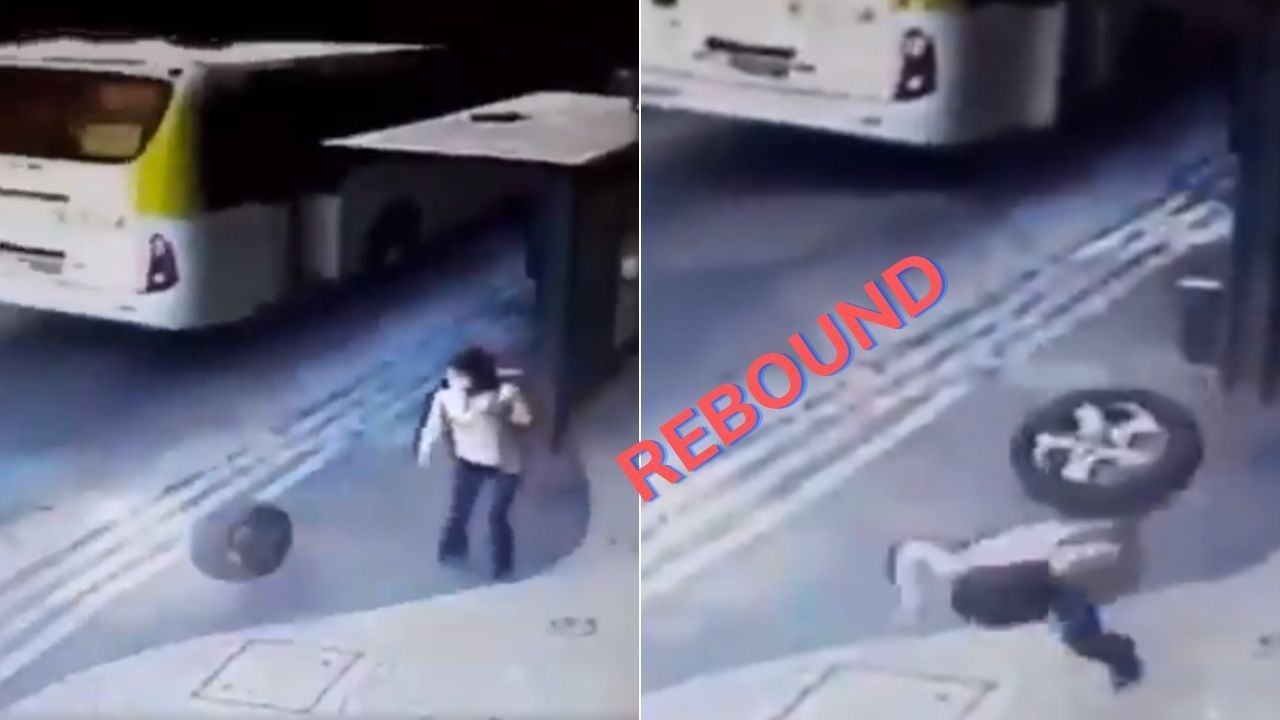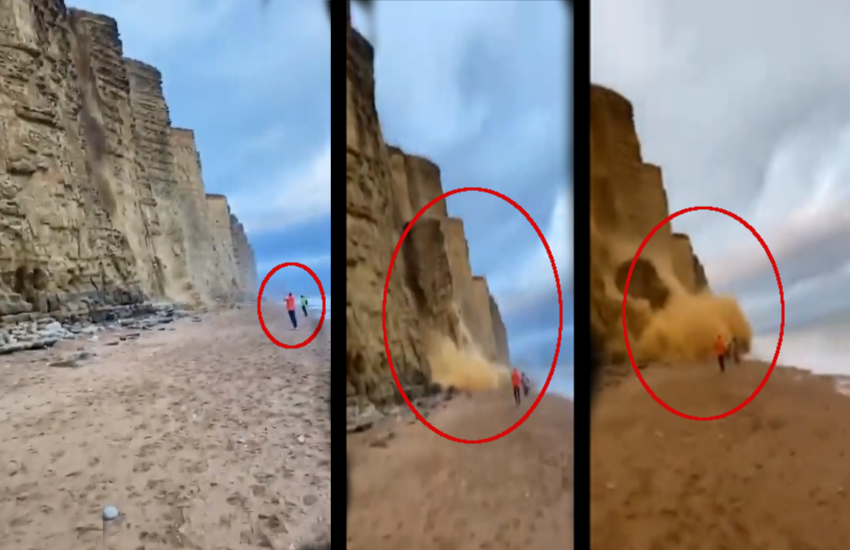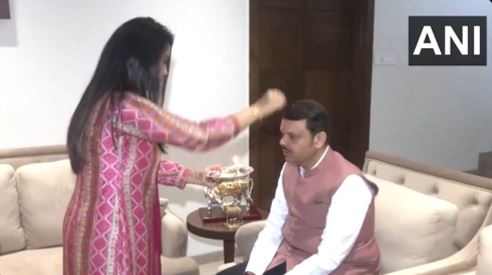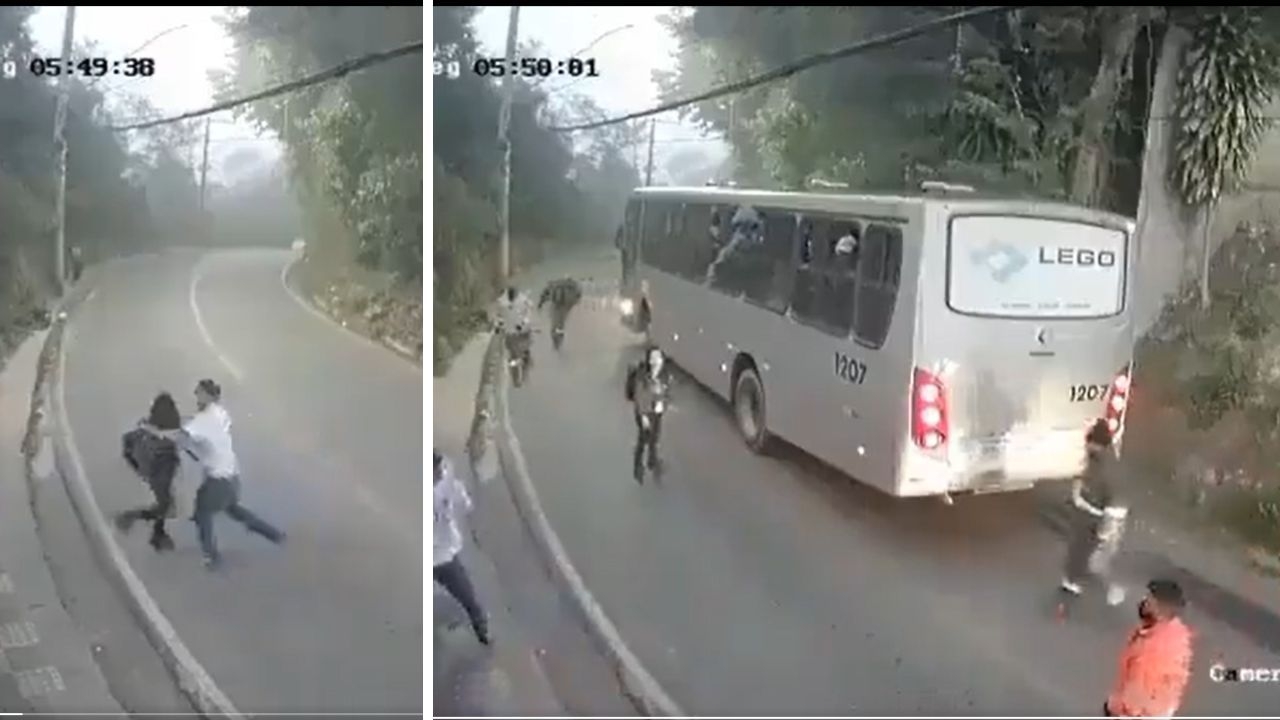How Gadkari and Javadekar broke rules for Mormugao Port project

Facts emerging from a National Green Tribunal (NGT) case have shown that in a series of decisions taken between 2014 and 2016, Union Shipping and Transport Minister Nitin Gadkari and the then Environment Minister Prakash Javadekar "subverted" environmental laws, "misrepresented" facts and overruled opposition from traditional fishermen communities to push through a project at the Mormugao Port in Goa.
The project - to deepen the navigational channel ships use to reach the port - would directly benefit Adani Ports and the OP Jindal Group, which operate one and two cargo handling berths at the port, respectively.
The NGT case - which was filed by the affected fishermen challenging the environment clearance to the project - casts a bad light on the two ministers.
The then Javadekar-led environment ministry ignored the red flags raised by the Goa Coastal Zone Management Authority, one of whose expert members had predicted the channel deepening to have "devastating" environmental impacts, including the possible submergence of two coastal habitations.
Further, the case revealed that Gadkari was instrumental in exempting the activity from a public hearing, which the tribunal termed as a subversion of law. It also turns out that Gadkari inaugurated the deepening works a full month before the clearance was actually granted. Starting work before getting an environment clearance is an offence under environmental laws.
Although the NGT has held the decisions as illegal and has also quashed the environmental clearance, the story of how the deepening was commissioned, how the environment ministry (mis)treated its own the clearance process, how just two companies would benefit directly from it, and how Gadkari's imprint is all over the story - all raise disturbing truths about environmental governance in the country, especially under the NDA government.
Interference from the start
Gadkari's influence on the project started within months of the NDA government coming to power following the 2014 general elections.
The Mormugao Port Trust (MPT), one of the 12 major ports of India, comes under the administrative control of the Ministry of Shipping. The port, which lost significant business after iron ore mining and exports were banned in Goa by the Supreme Court in 2012, has been diversifying into importing coal, another dry cargo. Coal handling at MPT is done on berths operated by OP Jindal group and Adani Ports.
Jindal's JSW Infrastructure has been handling coal imports since 2004 under a 30-year build, own, operate and transfer (BOOT) license at MPT. It does this exclusively to supply coal to the JSW group iron and steel plant in Vijaynagar, Karnataka.
Adani got a 30-year license in 2009, albeit to supply to other companies and not only its own plants. Adani began operations at MPT in June 2014, a month after the NDA government came to power at the Centre.
At Mormugao, both businesses wanted the ship navigational channel to be deepened, because at its existing depth of 15.5 metres, it could accommodate only those cargo vessels weighing up to about 100,000 DWT (Dead Weight Tonnage), and not the largest vessels that weight up to 180,000 DWT.
This was important for Adani because it meant more coal being handled per vessel, and for JSW because it could then supply the entire coal demand of its Karnataka plant (the shortfall was being met from ports on the east coast).
In September 2014, within three months of Adani beginning operations, MPT applied for environmental clearance to deepen the channel - technically called 'capital dredging' - to 19.5 metres.
This required the extraction of more than 15 million cubic metres of seabed material including sediment and rocks.
In the first stage of the process, on 9 December 2014, the environment ministry's expert committee on infrastructure went through the application and recommended a variety of impacts to be studied, and categorically mentioned that a public hearing was to take place.
Enter Gadkari
However, within a week of the expert panel's recommendation, on 16 December, Nitin Gadkari called a meeting under his chairmanship. In an affidavit to the NGT, the MPT said this was a "group on infrastructure" meeting, which was attended by Javadekar and officials from MPT and the shipping ministry.
In this meeting, Gadkari took a "policy decision" to exempt the capital dredging at MPT from a public hearing.
No explanation was provided, even though a public hearing for capital dredging projects is a legal requirement under the EIA Notification, 2006, and is a transparency measure, as affected communities can voice a range of concerns on the project, as also to point out gaps in the environment clearance process.
Nonetheless, in September 2015, the environment ministry brought out a formal order, exempting the project from public hearing.

Warnings from Goa
Meanwhile, the parallel process of seeking a coastal zone clearance had begun at the Goa Coastal Zone Management Authority (GCZMA), a statutory body formed under the Coastal Regulation Zone Notification, 2011.
For large projects like the one at MPT, the GCZMA is supposed to consider the pros and cons, and recommend a decision to the environment ministry, which then takes a final call.
In this case, however, the GCZMA did not even make a recommendation. They instead pointed out red flags raised by one of its expert members, marine geologist Dr Antonio Mascarenhas.
After conducting a site visit in July 2015, Mascarenhas submitted a report that said that "drastic environmental impacts could result" from the project. The report said that since the large-scale dredging would happen in an estuarine region (where the Zuari river met the sea), it could induce "drastic morphological changes", including the possible submergence of two areas, Sancoale and Chicalim.
Mascarenhas's report added that the environment impact study, which was prepared by WAPCOS Ltd, a public sector company under the water ministry, did not contain information that would help assess these risks better - such as echo-sounding profile of the existing channel, geophysical studies and cross-sectional depth profiles of the sea bed, and so on.
He recommended that another institution be asked to review the WAPCOS study and give a second opinion.
Based on this and a presentation by MPT, the authority took a decision in November 2015 that the project required a multidisciplinary study, and since it didn't have that kind of expertise, it asked the environment ministry to commission one to properly assess the impacts. It also told the ministry to consider Mascarenhas's report.
Meanwhile, dredging begins
One would, at this point, expect the MPT to be cautious after the GCZMA's warnings. But, almost as if in a parallel universe where environmental laws do not exist, MPT began searching for contractors to start the dredging work.
Throughout 2015, the business media wrote about the tendering processes, but neither the reports, nor the ministry spokespersons or the MPT made any reference to the environment clearance.
On 30 December, a tender was awarded to the Dredging Corporation of India Ltd, a public sector company also under the shipping ministry, without any environment clearance.
Shockingly enough, when his ministry should have stopped the tender as starting the dredging would be an offence under the Environment (Protection) Act, 1986, on 1 January, Gadkari actually inaugurated the work at a function on the MPT premises.
A brief press release from the shipping ministry said that the minister inaugurated capital dredging, in the presence of Goa Chief Minister Laxmikant Parsekar, South Goa MP Narendra Sawaikar, MPT chairman Jaikumar and Additional Solicitor General Pinki Anand.
Green signal
As documents from the environment ministry show, its expert committee met on 21 December 2015 to consider the project. The committee should have taken note of the GCMA and Mascarenhas's warnings, and recommended that more studies are required.
It did neither.
"After detailed deliberations," the minutes say, " the Committee recommended the project for environmental clearance & Coastal Regulation Zone (CRZ) clearance" with a set of conditions, the first of which was that all recommendations and conditions of the GCZMA "shall be complied with".
The committee had, in other words, passed the buck to the environment minister.
The minister took a decision to clear the project and the final letter - which also took no note of the GCZMA warnings - cleared the project as on 9 February 2016, a full month after the dredging had actually begun.
The NGT case
These revelations were uncovered at the National Green Tribunal's Western Zone bench in Pune. Two fishermen groups - Old Cross Fishing Canoe Owners Co-op Society and Baina Ramponkar & Fishing Canoe Owners Society - had together challenged the environmental clearance, and brought to the bench's notice the cancellation of public hearing and the hasty environment clearance provided.
In a scathing judgement pronounced on 2 September 2016, the full copy of which was made available recently, the bench comprising of Justice Jawad Rahim and expert member Dr AA Deshpande held the cancellation of the public hearing to be illegal, quashed the environmental clearance, and stopped all dredging work.
"In the last two decades, the country as a whole has seen public discourses on transparency and accountability," the judgement read. "In our considered view, the The Ministry of Environment & Forests (MoEF) needs to be reminded of these two important qualities in public administration."
The bench held that the cancellation of the public hearing was "without any authority of law and is arbitrary and devoid of any powers available under Environmental Impact Assessment (EIA) notification".
Significantly, it rejected the claim that this was an error, saying that the environment ministry "not only failed to apply its mind to the factual aspects of the project" but that "for unexplained reasons indulged in misinterpreting provisions of (the) EIA Notification...we have taken a view that it is not a neglect or omission, but maybe for some other reasons."
As for the 16 December meeting chaired by Gadkari, throughout the hearing, the NGT repeatedly questioned how it could take a decision that wasn't prescribed under any law.
At first, the MPT counsel defended that this was a policy decision taken by the government. When the NGT asked how a policy decision could be taken without issuing a government resolution, and whether the decision could also "bypass or subvert statutory provisions of Act/rules," the MPT counsel passed the buck to the environment ministry. Despite repeated reminders, the ministry never responded to the NGT.
The bench, in its judgement, indicated that the MPT and shipping ministry "unduly influenced" the environment ministry.
Saying that the MPT is "not as novice as portrayed", it said, "it seems that the MoEF was unduly influenced by such decision, wherein the Mormugao Port Trust and its administrative Ministry participated."
MPT's hurry
The MPT, which did not wait for an environmental clearance before issuing work orders, showed a similar attitude to the NGT case. Even as the bench heard arguments on quashing the clearance, there was no hindrance and the work progressed uninterrupted.
By the time the hearing was completed, 65% of the dredging was already done, according to MPT's submissions to the tribunal. In fact, the official timeline to complete the dredging was 7 months, and as per MPT's own submissions, they were in a hurry to finish it before the monsoon season.
The NGT had engaged Mascarenhas to head a panel to make site visits in May. Even his study concluded that most of the dredging work was already completed, and he recommended that a comprehensive study be done to conclude the exact nature and amount of damages.
By the time the fishermen's application to stay the dredging was considered by the NGT bench, it was already 30 May, and dredging was going to stop for the fish breeding season from 1 June to 15 July. It stayed the dredging after this date and on 27 July reserved its judgement in the case.
Why the push?
As the NGT establishes, Gadkari and Javadekar took decisions outside their powers and disregarded expert opinion, without explanation. The question then is, why did they?
The shipping ministry press release quoted Gadkari as saying that the project would give a thrust to Goa's economy. Combined with double-tracking of the South Western Railway, this would also help "transport goods" to Hospet in Karnataka, Gadkari added.
Admittedly, any increase in the scale of business would mean more money, and possibly more jobs to workers, transporters and other service providers. Unfortunately, there are too many murky details in this project.
For one, Hospet is also the region where Jindal's steel plant is located.
Gadkari may have stressed on the macroeconomic impacts of the project, but the environment impact assessment commissioned by MPT was specific about who this project was to benefit first.
"Coal imports for JSW at MPT are carried out at Berth No.6 which is operated by South West Port Ltd, a group company of the JSW. Another Coal Berth No.7 has recently been made operational by Adani Port Terminal Ltd. which serves a number of users. Coal Importers stand to gain significantly in terms of freight benefit if imports are done through Capesize vessels."
(Interestingly, these seem to be MPT's opinion as well. The same exact wording is repeated in an order of the Tariff Authority for Major Ports in March 2015, under MPT's submission regarding tariff to be imposed on the dredging operator. The EIA report was submitted eight months later in November 2015. The EIA is supposed to be an independent report.)
In fact, JSW was so interested in this clearance, that they even footed the bill for the satellite mapping of the coastal zone, meant for the EIA. Anna University, to which this study was commissioned, mentions in its final report that it was prepared "on the request of M/s JSW Infrastructure Ltd for M/s Mormugao Port Trust".
MPT is the applicant seeking environment clearance -so why is it the business of a licensee like JSW to fund such a study? When this was pointed out to the NGT, it said in a 24 May order, "this report undoubtedly is by a private agency, who had no statutory authority."
Even when MPT was considering running dredging as a PPP project, the four companies that had qualified as contenders for the project included both JSW and Adani Ports.
While JSW imports 7 million tonnes per annum (MTPA) of coal , it has a demand of over 15 MTPA from its Karnataka steel plant. Similarly, Adani, which has the capacity to handle about 4 MTPA, has in its investor presentations presented a target of reaching 10 MTPA.
With the increased capacity from dredging, there are no constraints on achieving these targets.
What's next
The NGT has decided to hear the case on 5 October, to enumerate the ecological damage caused by the dredging already completed, but more importantly, to list out who are responsible for it. As per the NGT Act, the cost of restoring the damage would be imposed on these guilty parties.
The MPT, as the project proponent, is obviously the main party. But it may not be only the MPT that has to cough up.
The wording in NGT's judgement leaves the question open as to whom it will blame. If it chooses to be conservative, then besides the MPT it may go against the MoEF, against which the judgement has come down strongly.
On the liberal side, the NGT could widen its net to the shipping ministry and its chief. Should it choose to do so, the NGT may get its first VIP indictment in its 6-year history.
Nitin Gadkari and Prakash Javadekar did not respond to questionnaires sent by email.
Also read: Watch Mormugao being unveiled: Indian Navy's most high-tech Guided Missile Destroyer launched
First published: 22 September 2016, 7:56 IST

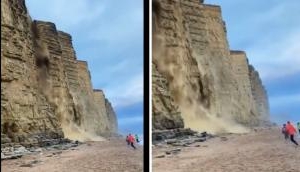
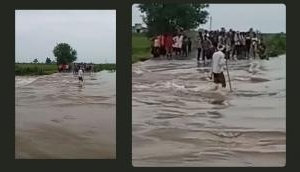
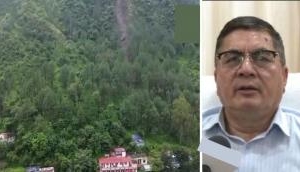


![BJP's Kapil Mishra recreates Shankar Mahadevan’s ‘Breathless’ song to highlight Delhi pollution [WATCH] BJP's Kapil Mishra recreates Shankar Mahadevan’s ‘Breathless’ song to highlight Delhi pollution [WATCH]](https://images.catchnews.com/upload/2022/11/03/kapil-mishra_240884_300x172.png)

![Anupam Kher shares pictures of his toned body on 67th birthday [MUST SEE] Anupam Kher shares pictures of his toned body on 67th birthday [MUST SEE]](https://images.catchnews.com/upload/2022/03/07/Anupam_kher_231145_300x172.jpg)


